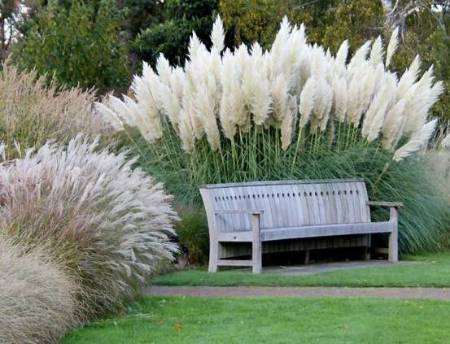Fall Perennial Care

Fall is coming, and hopefully, we are on the downhill slide regarding temperatures. With the cooler temperatures, we can complete some tasks that we haven’t felt like or been able to do with the heat we have had over the summer. We should give our perennial flower beds some care and attention as temperatures cool. We can accomplish several tasks over the next few months to help our perennials and ornamental grasses thrive for years to come.
If your perennials didn’t bloom well this year or are getting too big for their space, fall is an excellent time to dig your perennials up and divide them into smaller clumps. Some perennials, such as daylilies, do best if divided every four to five years to maintain flower production, while others need dividing to keep them somewhat in check. Other plants, such as ornamental grasses, will develop a dead spot in the middle if not divided periodically to maintain the plant's vigor. September is an excellent time to dig these plants and divide them into smaller clumps. Use a sharp spade and dig the entire clump up, then use the spade to cut the clump into smaller pieces. Ensure each clump is at least 6” to ensure enough root system to create vigorous new growth. You can then plant one clump back in the original spot and use the others in different places in the yard or give them away to friends to expand their garden.

Peonies are a spring favorite of many people. While a peony can be left in one spot indefinitely and continue to grow and thrive, you can divide them to expand your peony collection or move them to a new place. Peonies are easy to divide in the fall because they have gone dormant by mid-August, even if the leaves are still green. To divide a peony, remove all the foliage and dig the entire plant up. Shake or wash all the soil off the clump until you can see the plant's pink buds or "eyes" of the plant. Unlike dividing other perennials, you must use a sharp knife to cut up the peony roots, which are very tough. Make sure each clump has at least three eyes, but four would be best. Plant the new clumps in locations that get at least a half day of full sun, but the more, the better overall. Make sure the pink buds are only an inch below the surface. If planted any deeper, you might delay flowering, or there will be no flowers.
While it might be tempting to fertilize your perennials this fall with the cooler temperatures, it's best to wait. In the fall, we want our perennials to prepare to go dormant, which means you want to prevent lush, thick growth going into the winter months. It is essential to continue to water perennials unless we start to receive rainfall, but hold off on the fertilizer. Now is also the time to water our spring-blooming shrubs, such as lilacs, forsythia, mock orange, and others, as they are setting their bloom buds for spring. Water once or twice weekly as opposed to every day with just a little water for the best results.
While it's easy to forget about the fall tasks, we can do a few things now that will help our plants thrive through the winter and into the next growing season. Take this fall time to expand your perennial garden by dividing plants or give a gift to friends to help them get started on their gardening journey.

Have questions? Contact our office where our Horticulture Extension Agent will assist you with questions.
Phone: (316) 321-9660
Email: callae@ksu.edu